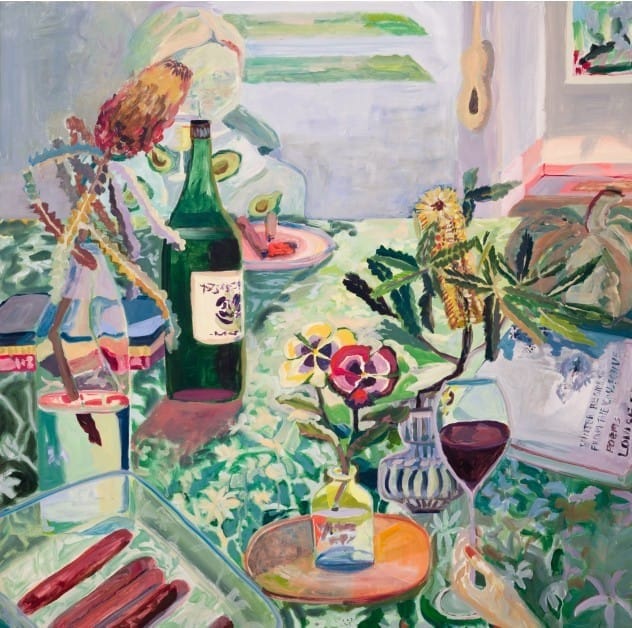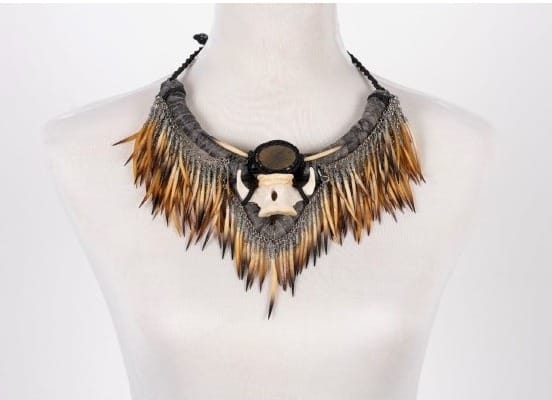
Plus gifts of life and a super shed. Welcome to Galah Weekly, our award-winning newsletter keeping you up to date with regional headlines that matter, plus other delightful things from life beyond the city. By Dean Southwell, who is suffering serious shed envy.
Renewables, particularly solar power, remain the cheapest form of energy to add to the national grid but steadily rising construction costs will be a critical factor in paying for Australia’s energy transition regardless of the technology used.
This is a key message from the CSIRO’s latest GenCo report released last week, analysing the long-term costs of developing new energy sources.
The report also found small modular nuclear reactors, which were a key part of the Coalition’s energy policy at the May election, were the most expensive option.
It was released as former Nationals leader Barnaby Joyce introduced a bill to parliament seeking to scrap Australia’s 2050 net-zero emissions target amid ongoing debate within the Opposition.
The CSIRO report won’t end concern within affected communities. Some Victorian farmers are angry as the state moves to give authorities greater right-of-entry to farmland to build transmission infrastructure.
Meanwhile, the federal government expanded one of its renewable energy programs, and economist and renewables advocate Ross Garnaut told the Australian Clean Energy Summit the nation needed to reintroduce a price on carbon.
These moves came after a landmark ruling by the International Court of Justice last week found nations have an obligation to limit greenhouse emissions.
Looking for a welcoming Sydney base with cultural events, dining options, and boutique accommodation? Founded by women, for women in 1901, The Women’s Club offers connection, inspiration, and community for women nationwide, whether at work, play or rest.
Join as a full member member or TWC Friend, and don’t miss our next Open House on Wednesday, 20 August from 5.30pm. Discover membership today.
A major audit of the 13-year-old Murray Darling Basin Plan has painted a generally rosy picture of its achievements, but farmers and other lobby groups remain critical.
The Murray Darling Basin Authority says its 2025 basin plan evaluation is the most comprehensive yet and shows reforms, which include significant water buybacks, are delivering environmental benefits in river catchments.
Yet the Victorian Farmers Federation says the evaluation painted a deceiving picture. Water Council chair and Murrabit dairy farmer Andrew Leahy said the plan measured progress against a baseline year of 2007, one of the worst for agriculture in living memory. He said the audit’s generally positive tone ignored the reality facing affected farmers and communities who were living with less water.
“I live in northern Victoria, and the impacts are real. Fewer farms means fewer jobs, fewer people in our schools, and fewer kids on the footy and netball teams,” he said.
Dozens of southern NSW gardeners have been recruited to help save a native shrub that lives only in a 6km stretch of land in the Snowy Mountains.
It’s thought there are fewer than 1000 of the purple-flowering Tumut grevilleas surviving in the wild.
The NSW environment department and Riverina Local Land Services have distributed cuttings and advice on how to propagate the plant to more than 40 people around Tumut in the hope they will help save the plant.
A convoy of more than 80 trucks has travelled across the Nullarbor from WA to deliver fodder to hundreds of drought-stricken South Australian farms.
The trucks, which would have stretched for 3km if parked nose-to-tail, set off from Norseman last week and arrived on the Eyre Peninsula at the weekend. The relief convoy is organised by charities Farmers Across Borders and Need for Feed, and transport costs were covered by the SA government.
The convoy arrived about the same time as rain swept the south of the continent last week, although farmers say it’s too cold to drive pasture growth and they’re left with the deceptive signs of a green drought.
A brief to design a 19th century French-style farmhouse in rural SA has evolved into something much more contemporary and Australian – complete with corrugated-iron cladding – and won national architecture design awards.
Carrickalinga Shed, south of McLaren Vale on the Fleurieu Peninsula, has won Grand Designs Australia 2025 awards for large home of the year and energy-efficient home.
Although the original brief was for an off-grid French-style farmhouse on the former dairy property, the owners’ memories of life on a Blue Mountains farm eventually saw Architects Ink design something that delivered a modern twist on an Australian farmhouse.
Check out some of the other winners here.
It appears increasingly unlikely the national economy will ever see the $22 billion of tax and royalty benefits promised more than a decade ago by Indian multinational Adani when it proposed its giant Carmichael coal mine in central Qld.
The mine has been extracting coal for more than three years and recording strong revenue – more than $1 billion in the year to March – but has consistently reported losses, due largely to payments it has to make to Adani-related enterprises overseas. That means it and other Adani entities in Australia pay little or no corporate tax.
The environmental and political fight to approve the Carmichael mine and associated rail and port facilities was one of the fiercest of the past decade.
Just a reminder that our reader survey gives you the chance to shape a possible future for Galah and be in the running for some great Galah prizes.
Editor-in-chief Annabelle Hickson, who is passing on the baton after two more magazine issues, has launched the survey so you can tell us what you value most about Galah.
Tell us what’s working, what’s not and what you wish existed.
Winners will be drawn on 15 August.

Amber Morris, who grew up in Grafton and lives at nearby Nymboida, was last week named winner of the $5000 Clarence Valley Indigenous Art Award. This exhibition features finalists in the biennial acquisitive award, including emerging artist award winner Brittney Lavis and youth winner Jaxon Clifford. At Grafton Regional Gallery, NSW, until 14 September. Read more
Multi-disciplinary Wollongong artist Amy Cuneo explores the theme of care in an exhibition in which everyday objects take centre stage. At AK Bellinger Gallery, Inverell, NSW, until 31 August. Read more
It’s the last chance for sculptors to submit entries for NSW’s largest outdoor art exhibition. Submissions for Sculptures in the Garden, which offers $55,000 in prizes, close on 8 August. Rosby Wines and Gallery at Mudgee, which hosts the October event, has a current exhibition featuring sculptors Emma and Michael Ferris and painter Michelle Hiscock. At Rosby Wines and Gallery, Mudgee, NSW, until 11 August. Read more
Mindy Woods is a proud Bundjalung woman and passionate advocate for First Nations cuisine and culture. Woods originally trained as a physiotherapist but switched to a career in food in her 30s, competing on Masterchef and running restaurants in Sydney. Last year she closed her Byron Bay restaurant, Karkalla, to concentrate on a new project: Karkalla On Country. It aims to challenge the concept that restaurants have to operate within four walls. She’s also released a cookbook, Karkalla At Home, and works with organisations dedicated to promoting Indigenous opportunities, agricultural practices and food sovereignty.
In May, Woods became the first Australian recognised with a champions of change award by the World’s 50 Best Restaurants for her work sharing Indigenous culture through food.
Why do you think food is so important in sharing culture and reconciliation? Food is a universal language that provides a tangible link between generations and bridges gaps between cultures. For First Nations people, traditional foods carry stories, histories, and connections to the land. When we share meals that are deeply rooted in our culture and communities, we open up dialogues about our traditions and challenges, fostering understanding and empathy.
Why do you think native foods should have a bigger place in Australian food culture? It’s really disheartening that native foods – central to the heritage of Australia’s First Peoples – remain largely absent from major grocery chains. This oversight marginalises Indigenous culture but also deprives Australians of the opportunity to savour flavours that embody our land’s history and resilience. Native foods offer unique flavours and nutritional benefits that align with contemporary trends toward sustainable and ethical eating.
Why is karkalla such an important part of your story? Karkalla, yulli, or pigface, is a coastal succulent that has been used for food and medicine by my people for generations. It embodies the connection between my community and the land. It was also the first native food I picked with my Nan Margie Felton, a gracious and resilient Bundjalung woman who lived through a time when practising her culture or speaking her language was forbidden. She found gentle and powerful ways to show us who we were and where we come from.
Tell us about Karkalla On Country. It’s about creating an experience that connects people with the land and its resources. We aim to offer workshops, collaborations with local and international chefs, and immersive dining experiences that educate. The goal is to revive traditional practices and foster relationships between Aboriginal and non-Aboriginal people.
What are some native ingredients you couldn’t live without? Karkalla (pigface): for its versatility and nutrition and those memories of harvesting it with my Nan and family on the beaches of Bundjalung Country. Wattleseed: a fragrant, nutty flavour perfect for desserts and baked goods. Macadamia nut: Indigenous to Australia, it adds a buttery richness to any dish. Bush tomato: a robust flavour that enhances savoury dishes and sauces.
A West Australian couple whose baby son died waiting for a heart transplant have told their story in the hope it encourages families to have conversations about organ donation.
Busselton parents Alex and Sinead Foster spent months in Melbourne’s Royal Children’s Hospital with first-born son Teddy waiting for a suitable donor match. Teddy was 20 months old when he died last year and they’re now back in hospital with six-month-old Noah, who has the same heart condition as his brother.
Although Noah doesn’t yet need a transplant, the Fosters have used their experience to encourage organ donation.
About 80% of Australians over 16 support organ donation but only about a third are registered as potential donors. DonateLife Victoria medical director Rohit D’Costa said older people shouldn’t assume they wouldn’t be suitable candidates for donation, even to help children.
Anyone aged over 16 can register on the Australian Organ Donation Register.
We’d love to hear about the news, events and people that should be making the headlines in the Galah Weekly newsletter. Share what’s new(s) in your neck of the woods with us at newsie@galahpress.com